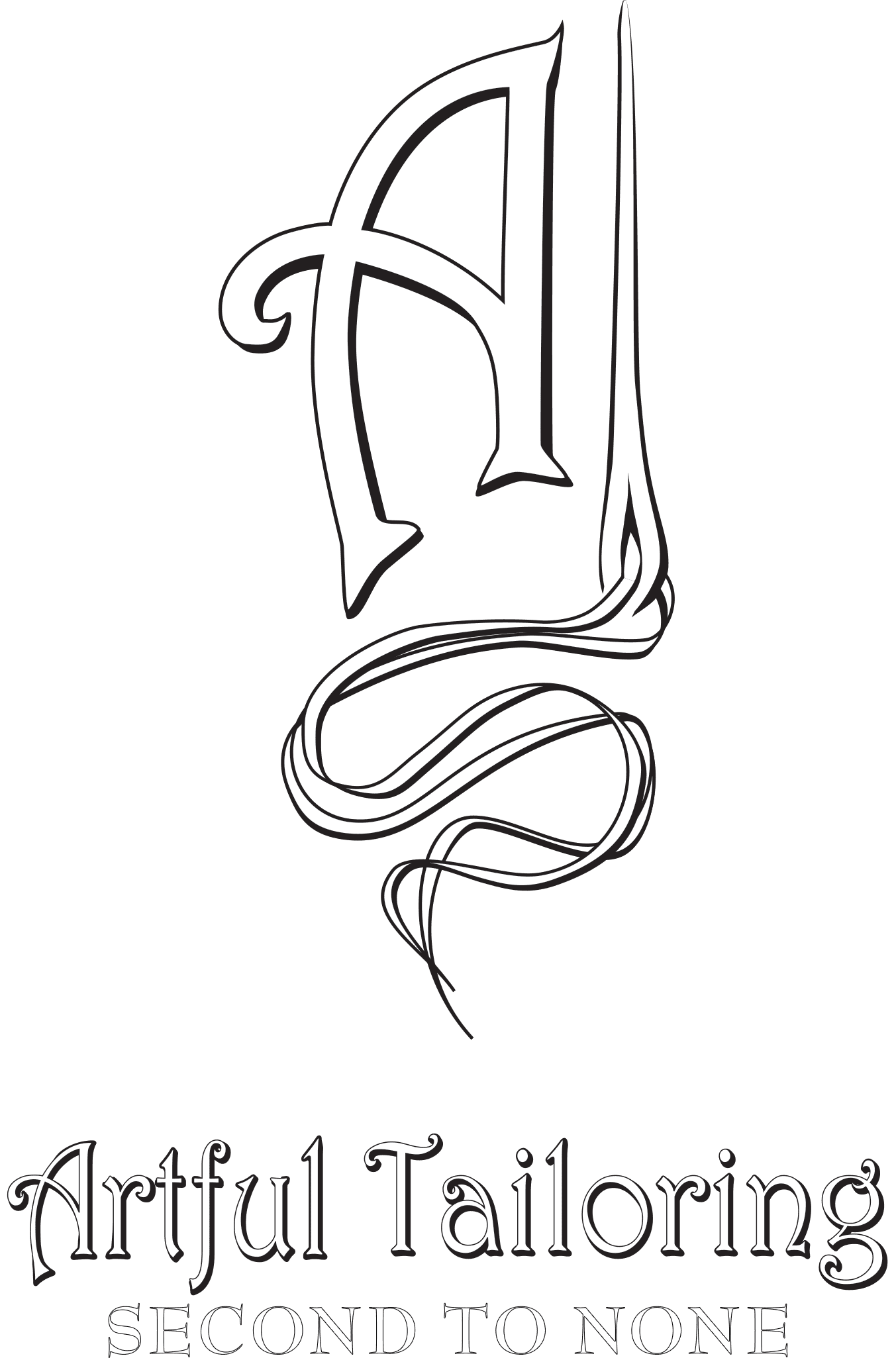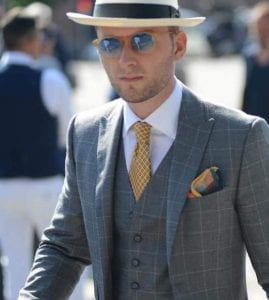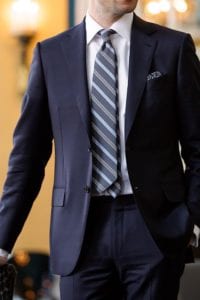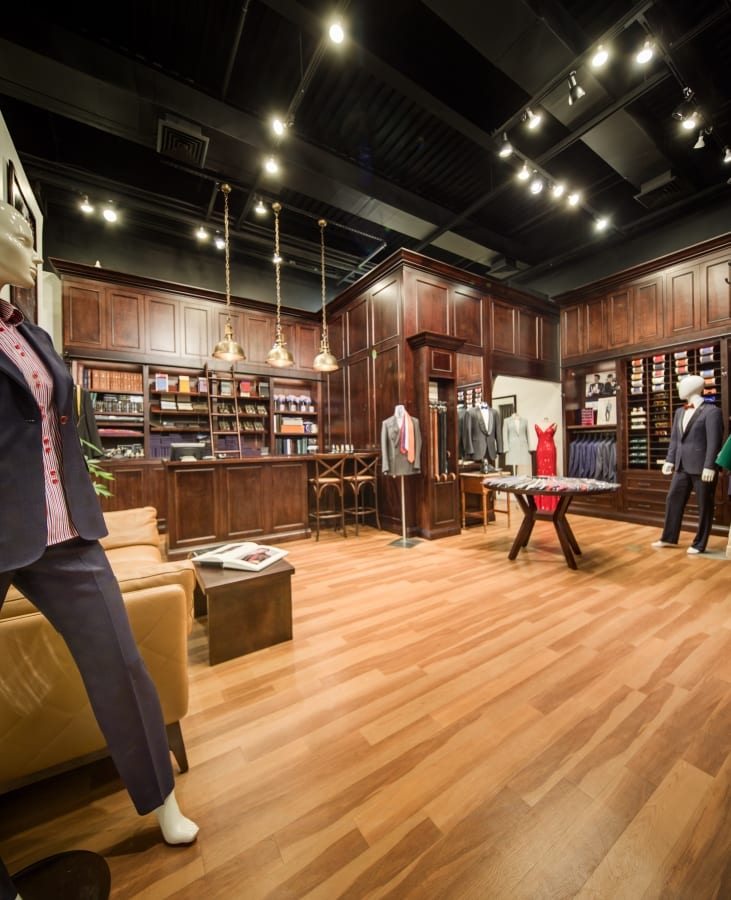
Redfin asked Artful Tailoring and fellow sewing experts from around the globe to provide insider advice on sewing at home. We share what you need to set up an organized and professional sewing space of your own.
So if you’re looking to set up your very own sewing room and want to learn some helpful tips and tricks, check out this article by Redfin.
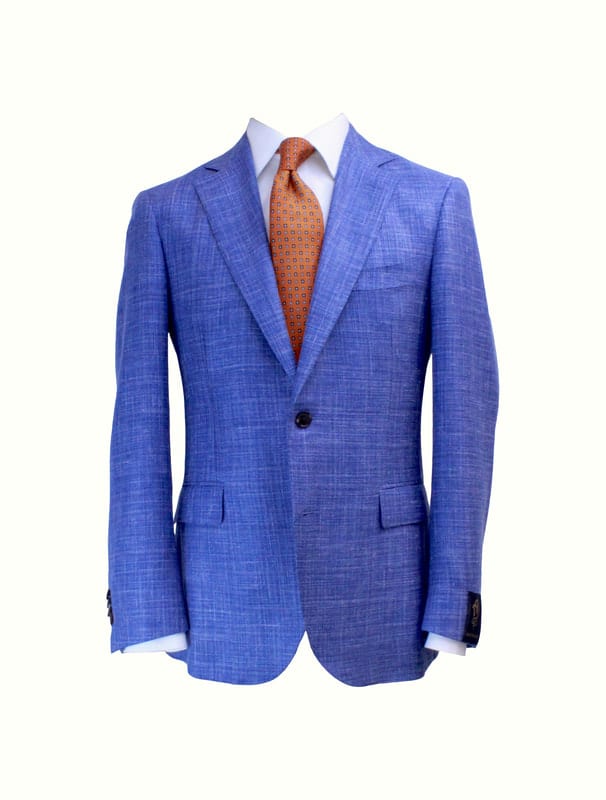

Getting dressed in the summer can usually present a challenge. We’d prefer to stick with wearing as little and as light as possible, but those of us who have to look put together and professional can feel like they are left with little to no options to alleviate their situation. When you think of menswear, you can easily relate it to heavy dressing with multiple layers and form-fitting, constricting garments. As tailors and custom clothiers, we’re here to provide some easy solutions to get through the warmer months. Below are 5 ways to stay cool; both sartorially and physically!

- Stick to a lighter color palette. Darker colors keep in the heat and usually look out of place for the summer aesthetic. You can still wear your typical colors if you’re a fan of neutrals, but just go for medium shades instead of traditional dark navy and charcoal if lighter ones are too drastic for you. Various shades of browns are also great substitutes for black and pair well with a wide variety of colors.
- Focus on separates. If you still have to look professional during the warm months, utilize two and three piece suit options that can be broken up and worn on their own with lighter weight items. For example, a nice pair of lightweight wool dress pants with a 100% cotton dress shirt and tie is a heat-friendly menswear look while still remaining put together. Simply add a vest for more formal events! Or, pair a linen sports coat with jeans and a moisture-wicking polo for a casual weekend look.
- Look for natural fibers. Cotton, linen, silk, and wool will be your best friends this summer. Natural fibers release body heat and are extremely breathable. When it comes to custom jackets, ask your tailor about what type of lining fabric they use. Most are made with polyester which will make you feel warm very quickly as synthetics trap in heat. All of our jacket linings are 100% cotton and feel like silk which are perfect for those living in Arizona!
- Choose canvas interfacing. If you’re going to wear a suit or jacket, make sure it is made with canvas inside as opposed to standard interfacing. A canvas construction is made from horsehair wefts mixed with cotton and silk, making it a natural fabric. This interior layer allow for your body heat to be released and keep you cool instead of trapping all of that in. Most off-the-rack (and even some custom) suiting is made with traditional synthetic interfacing and glue, so be sure to ask your tailor what method they use. All of the custom mens suits at Artful Tailoring are proudly made using canvas construction.
- Details in dressing. Lastly, regardless of what you decide to wear during the summer months, don’t forget about tailoring! From jeans, t-shirts, and other menswear casual clothing, we can tailor it all. You can still look put-together and stylish no matter what the weather is like. We offer full-service tailoring at both of our Phoenix locations. Don’t sacrifice your personal style this summer! Visit our experts today.
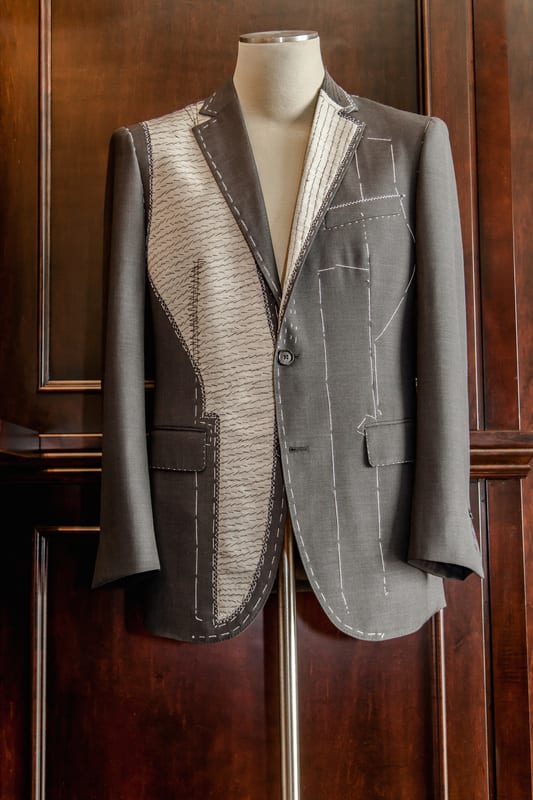

So you’re thinking of buying your first custom-made bespoke suit. Welcome to the club! But wait, where do you start? If you’re new to the custom garment scene, there are a few things you should research and decide on before you see a tailor. We’ve put together a short guide of what to have in mind before your appointment, and what your clothier can help you with during your one-on-one meeting.
What’s your budget? (#1) The most important thing you should be thinking about before going to see a tailor is your budget. Knowing how much you can spend will immediately cut down on fabric options (and believe me there are MANY), and how much detail you can get into. Being upfront with your tailor will save you both time and energy.
What’s the occasion? Do you wear a lot of suits and are finally ready to splurge on a bespoke suit? Maybe you’d like something special to wear on your wedding day, or a big event. Tell your tailor what the suit is going to be used for and how you want it to fit into your wardrobe. With this knowledge, your tailor will be able to guide you in choosing the right details to make your dream garment.
Two or three piece? Though this may be determined based on your budget, it’s a good thing to think about. If you live in a warmer area but still liked to dress up, a three piece is a great option to have. You can even have the vest made out of a contrast fabric that can still be worn with or without the suit for even more wear.
Single or double breasted? Both are classic styles, but a double breasted is definitely more of a stand out piece. For example, you can probably wear the same single breasted jacket 3 times a week. Once you’ve worn your double breasted people will notice a repeat outfit.
Things to discuss:
Pocket style? If you’re new to bespoke, you may want your tailor to take the reins regarding these next two details. There are a variety of pocket options and placements for your suit including flap, jetted, patch, slanted, and straight. You can have a chest pocket, coin pocket, double flaps, and many more combinations. Again, your tailor can educate you on which options to go with based on the reason you’re getting a suit. Some styles are more appropriate for certain occasions.
Working buttons or faux? If you already know you want working buttonholes on your sleeves, voice it during your appointment. This is key to mention prior to any work being done on the jacket. Workable buttonholes are sometimes considered a key point on a custom bespoke jacket as the sleeve length needs to be exact. Once buttonholes are opened, it is impossible to shorten them and maintain the original design and proper proportions.
Bonus Tips:
Bring reference/inspiration pictures. If you’re inspired by a celebrity, street style, or Instagram post, email or print the pictures and have them available at your appointment. Pictures always help communicate your ideas in a more effective way. Whether you like the fit, fabric, or overall style, a tailor will be able to translate your ideas into something that looks best on you.
Don’t be afraid to voice your opinion! Even if you’re a novice, don’t be afraid to speak up if you don’t like something. Being honest with your tailor is extremely important as a bespoke garment is an investment. We want you to enjoy your clothing! A true expert will able to understand your concerns and either provide feedback as to why they are recommending certain things, and how to achieve a compromise that satisfies your needs while not sacrificing the overall look.
Things your tailor can help guide you on:
Fabric. After talking with the tailor about your needs, wants, and ideas, the first thing you’ll be focusing on is fabric. In conjunction with an overall style, they’ll begin to show you fabric options that work best for you. The weight of the fabric will be determined by what’s appropriate for your event, the weather and location, and of course your budget. Next, they will guide you on the right color to compliment your skin tone, hair and eye color. If you’re wanting a patterned fabric, a tailor can help chose the correct scale that looks best on your body type.
Lapel. Though the options are limited (notch, peak, or shawl), choosing the right one can be best determined by tailor. Other things they will take into consideration is the width and how high the gorge is placed.
Overall suit style. Figuring out your most flattering overall bespoke suit style should be decided on by your tailor. Most clothiers will have visuals of finished options to make this process easier, and then you can discuss the smaller details once this is chosen.
Lining style and color. Did you know that there is more than one way to line a jacket? You may have made a decision on this before your appointment, but your tailor can offer you full, half, or unlined options and explain which one is best for your garment. You can also choose what color the lining will be and whether or not you want it to match or contrast with your outer fabric.
Final details. Finally, if you still hadn’t decided on a few of the custom suit particulars before you visited your tailor, ask for their opinion! The tailor should have your best interest in mind and be willing to discuss details more thoroughly. Their goal should be to help you translate your idea into something that is flattering for you.
After all the details are chosen and measurements are taken, it’s now up to your tailor to use all the ingredients to make the best recipe: your final garment.
But wait, there’s more!
The power of a custom-made bespoke suit is well, customization! If you’re interested in adding things like suspender buttons, inner pockets to fit your particular phone size, tabs on your pants to make them adjustable, and many more details that are often not available on ready-made garments, your tailor can incorporate these. By doing your research or asking your tailor if there are any additional customization features available will only help in making your garment come to life.
Ready to start? Book your one-on-one appointment with Artful Tailoring here.

Here at Artful Tailoring, our expert staff has over 25 years of experience in alterations, fit, and garment construction. Because of this knowledge, we know the challenges that someone with an athletic build faces when it comes to purchasing a suit. Over the years, we have put our tailoring expertise to the test to develop unique clothing patterns that are different from other retail companies.
Before we go into more detail about our products, it is important to explain how suits are cut, and how they determine their sizing. Manufacturers around the world cut suits based on the chest size. Using industry standards, they use these “averaged” measurements to create each suit.However, as most people are aware, these sizes don’t really fit a majority of shoppers. When it comes to people that have more muscular bodies, these fit issues are extremely apparent. Athletes don’t have a standard body shape, therefore they cannot purchase standard clothing.
When you go to the gym and start working out, you’ll notice your shoulders and chest become disproportionate. After a while, you start to find that garments that once fit your chest are now too tight in the shoulders. The shoulders are really the key area when it comes to finding the right fit. As we explained, mass suit makers don’t focus on this. If you try to buy a suit that does fit your shoulders, you’re going to see that the rest of the jacket does not. This is especially true for athletes that are under 5’8” and over 6’2”. When you go up a size to fit said shoulders, you’re going to see that the sleeves that are too long, the waist is too large, and your jacket hem will fall too low on your body. All of these elements create undesired proportions and costly alterations that are not going to provide you with the best possible final product.
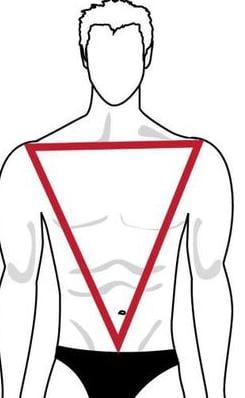
Another part of suiting that is different for athletes is the waist. When your body is in peak shape, the midsection is very trim and you start to get an inverted triangle shape physique. When you buy a suit off the rack, the pants are typically cut with a 6 size difference between the jacket and pant size. For example, if you buy a size 38R jacket, the pants that would be sold with it are a size 32. You can probably already foresee the problem with this…As you go up in jacket size to fit your shoulders, your pant size is also increasing. However, athletes tend to have an even smaller waist size than the standard 6” drop. Most retail stores don’t allow you to purchase a jacket and pant size separately, so you end up with added alterations.
To treat this issue, we have made an exclusive pattern dedicated to athletes. Customers who try on an Artful Tailoring suit will notice an immediate difference; one that will make them feel comfortable and confident. With custom clothing, you can also order the necessary size combinations to fit you-nothing is standard here! Not only will you get a superior fitting garment, but you’ll also be able to show off your personal style by handpicking your fabric, buttons, lining, and other details.
By understanding your challenges, finding the perfect fitting suit makes it easier with Artful Tailoring. For a suit that is as unique as your physique, visit the experts today!
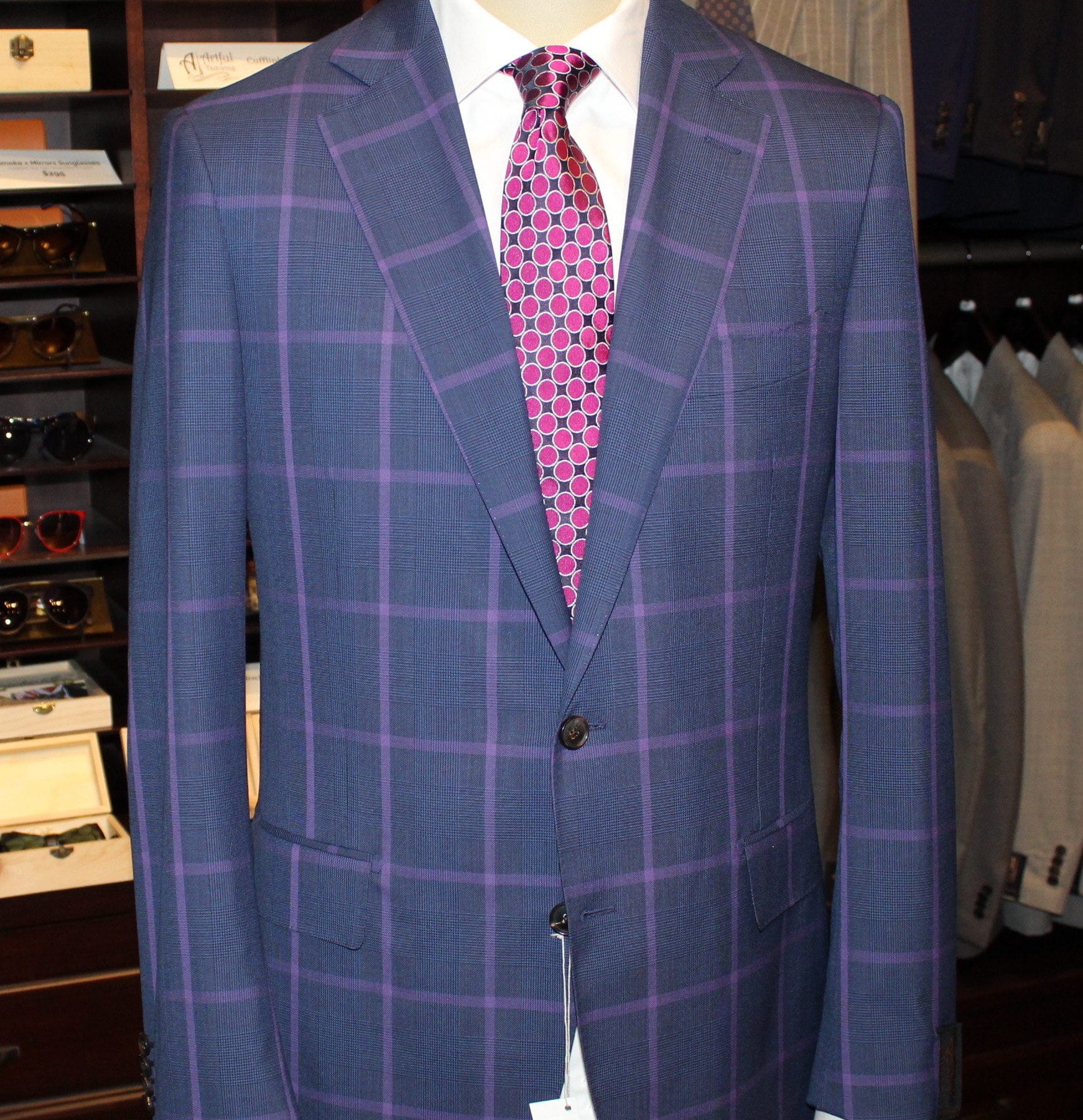
If you’re new to the suit and tie game, or just want to step up your sartorial looks, Artful Tailoring is here to provide you with no-fail suit and tie combinations that you can start putting together today!
Let’s start with the basics: the color chart. Knowing foundational color theory will help you because a tie matching master in no time at all.
Keeping in mind these 6 color schemes will be key in creating the perfect outfit combinations. Typically, most suits and jackets that you’ll own are made up of various neutrals such as black, shades of grey and charcoal, tan, and shades of blue, and even brown. Your suit should be the primary color, and the shirt and tie are considered accents. However, you’ll need to be sure that the tie also goes well with your shirt and pants in case you take off the jacket later.
Colors also convey meaning, so it’s important to know what kind of message you’re trying to send with your outfit. Cooler tones are more visually calming and welcoming, while warm tones pack a bolder punch of energy and excitement to an outfit.
In this post, we’ll be focusing on creating winning looks paired with a classic white or off-white shirts.
The breakdown:
Black Suit– This pairing serves up a stark contrast, so it’s usually reserved for formal events or funerals. We say reserve this suit for those occasions, but add interest with texture and subtle patterns in your tie for a modern take to this classic look. A black suit or tuxedo, white shirt, and an ivory tie is also a great look! Notice the subtle stripe on Daniel Craig’s tie, and the texture on David Beckham’s.

Grey Suit: This is when you can really start to play with textures, patterns, and colors. From light to charcoal, grey is a versatile neutral that goes well with almost anything. It’s welcoming and easy on the eyes, but when paired with a white shirt it can get a little icy. Some of our favorite pairings are deep burgundy or forrest green colored ties with grey suit, but the combinations don’t stop there.
Monochromatic options: This route doesn’t have to be boring. The key to a winning combination is incorporating interest with patterns. If your suit is patterned, keep the shirt and tie simple. Solid suit? Flip it around.
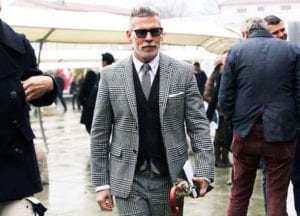
Keeping it cool: This scheme will also work with blue suits (see below). Since grey and blue are both considered “cool”, they pair well with other cool colors like purple, green, and other blues. They all look very different, but in each outfit your eye goes straight to the tie.

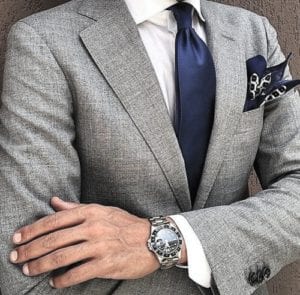
Contrasting-Add some warmth by wearing a bolder, contrasting color tie. If your suit has a pattern that has some color to it, choose a tie that matches to bring the whole look together (see far right). Burgundy, orange, and even yellow all pair well with grey. A tip to keep in mind with contrasting (especially yellow and orange) is to find ties that have grey in them.
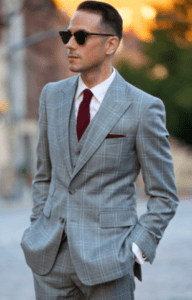
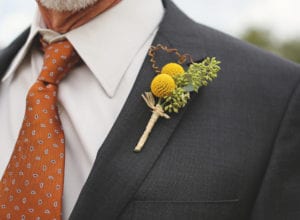
Navy-You can’t go wrong wearing a navy suit. It’s in our top two of our must-have wardrobe staples for men. Like grey, the pairings are seemingly endless. We break down our favorites down through the same three schemes as we did above.
Monochromatic: Since we’re using a white shirt in our examples, these techincally don’t count as monochromatic, but we’re giving you ideas on how to make a blue suit and a blue tie work. You can achieve everything from bold to corporate office appropriate with this combination, it’s just all depends on your shades and patterns. You’ll notice that the suit and tie pair best when one is lighter and the other darker. This way there is no competition with the viewers eye. Go ahead and mix patterns to make it really interesting (see middle), but just remember to choose one larger print with one smaller.


Keeping it cool: All cool shades, look well, cool. When done right, this can create a fresh, modern, and sophisticated outfit.

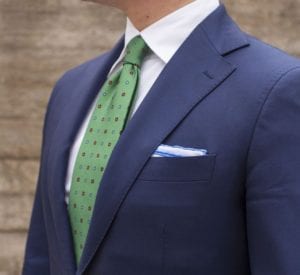
Contrasting: Blue and orange are complimentary colors, so warmer shades go well with cool blues. Just like with grey, find ties with blue in them to have a cohesive look, or add a pocket square or lapel pin to pull it all together. Each of these packs energy into a standard blue suit.

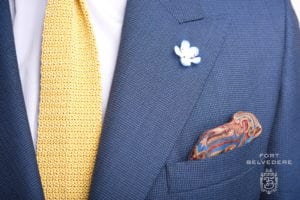
Brown/Tan Suit: Brown is a great suit color that you can wear all year long. Darker in the winter, and gradually lightening through spring and finally ending in light tan or cream in the summer, don’t forget too add this color into your wardrobe once you have the basics. You can pair just about any color with this neutral, and soon you’ll want to start changing up the shirt colors to explore more options!


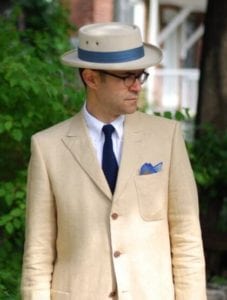

We hope you enjoyed this crash course and that you’ll use some of these tips to start creating your own winning suit and tie outfit combinations! Of course, these are all just starting points for portraying your personal style. Have fun, don’t be afraid to try something new, and remember our staff is always here to provide in-depth style advice at both of our Arizona locations.
